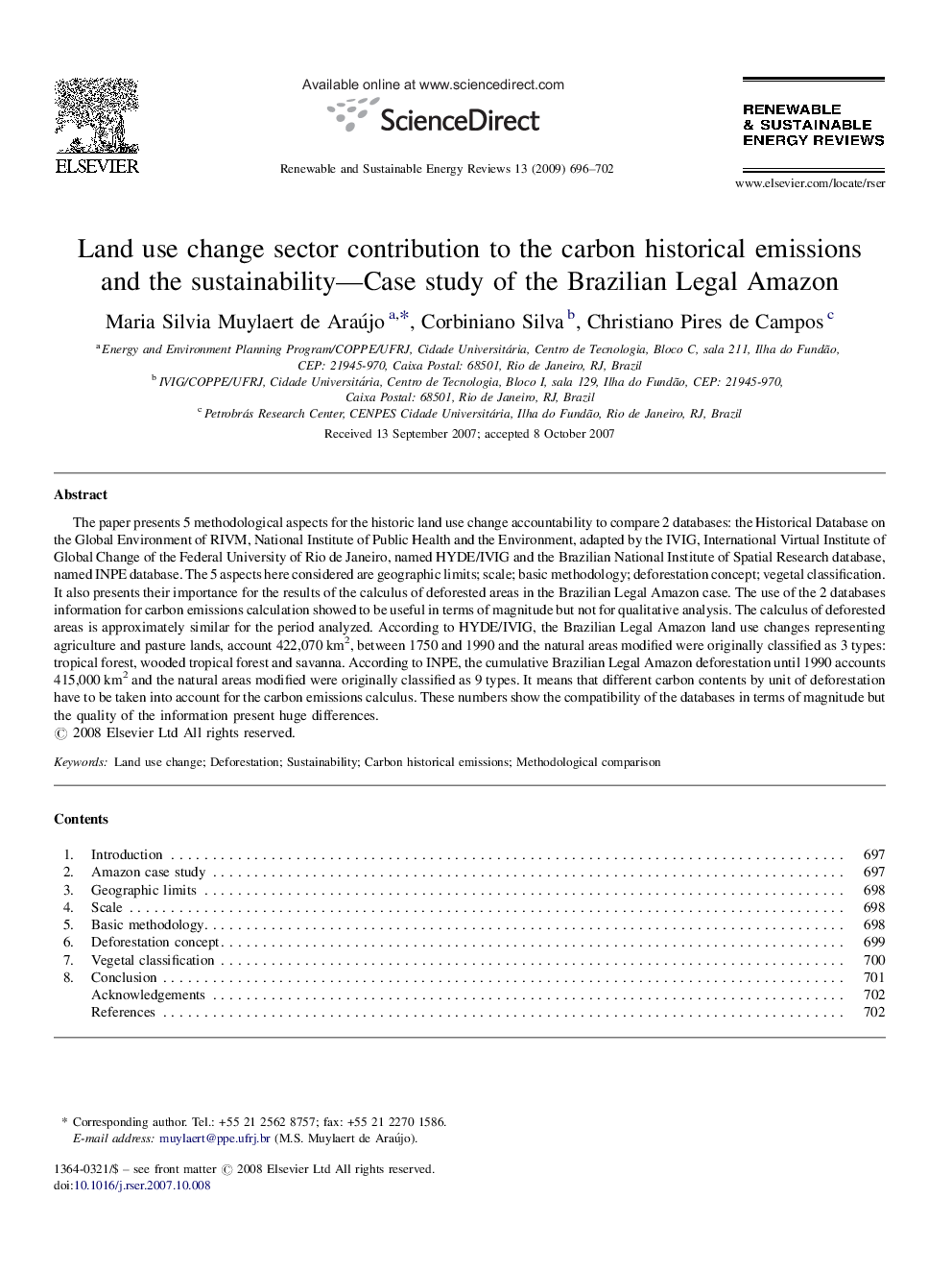| Article ID | Journal | Published Year | Pages | File Type |
|---|---|---|---|---|
| 1752203 | Renewable and Sustainable Energy Reviews | 2009 | 7 Pages |
The paper presents 5 methodological aspects for the historic land use change accountability to compare 2 databases: the Historical Database on the Global Environment of RIVM, National Institute of Public Health and the Environment, adapted by the IVIG, International Virtual Institute of Global Change of the Federal University of Rio de Janeiro, named HYDE/IVIG and the Brazilian National Institute of Spatial Research database, named INPE database. The 5 aspects here considered are geographic limits; scale; basic methodology; deforestation concept; vegetal classification. It also presents their importance for the results of the calculus of deforested areas in the Brazilian Legal Amazon case. The use of the 2 databases information for carbon emissions calculation showed to be useful in terms of magnitude but not for qualitative analysis. The calculus of deforested areas is approximately similar for the period analyzed. According to HYDE/IVIG, the Brazilian Legal Amazon land use changes representing agriculture and pasture lands, account 422,070 km2, between 1750 and 1990 and the natural areas modified were originally classified as 3 types: tropical forest, wooded tropical forest and savanna. According to INPE, the cumulative Brazilian Legal Amazon deforestation until 1990 accounts 415,000 km2 and the natural areas modified were originally classified as 9 types. It means that different carbon contents by unit of deforestation have to be taken into account for the carbon emissions calculus. These numbers show the compatibility of the databases in terms of magnitude but the quality of the information present huge differences.
